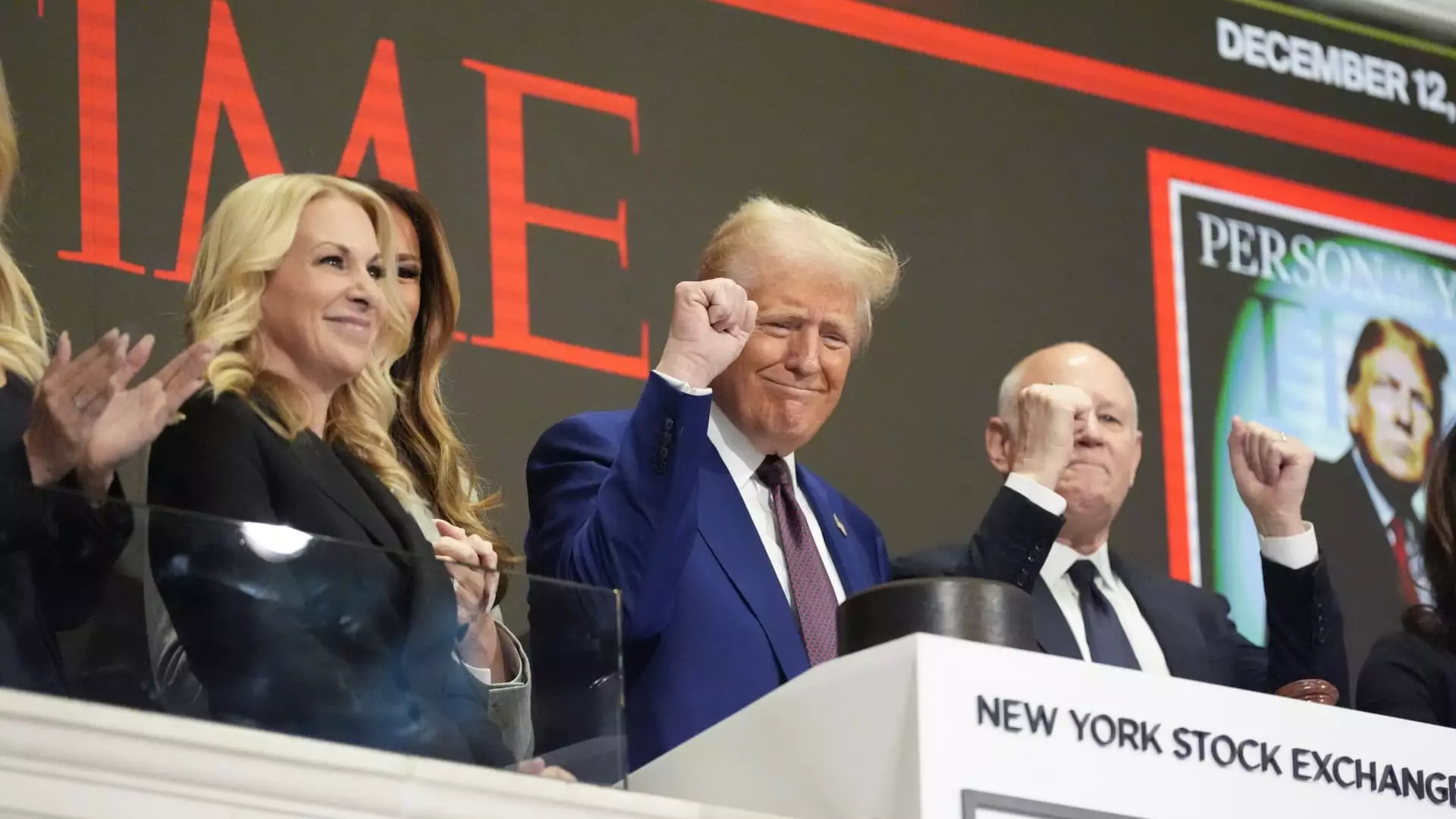On a notable Thursday, President-elect Donald Trump made a significant appearance by ringing the opening bell at the New York Stock Exchange (NYSE). This event marked not just a ceremonial act but a symbolic representation of Trump’s ambitious economic vision as he rallied traders and business leaders with promises of prosperity and an invigorated American economy. The event was attended by influential figures across the financial landscape, accentuating Trump’s importance in the economic narrative. With the date of his inauguration (January 20) rapidly approaching, the energy expressed by the crowd highlighted a renewed sense of hope and anticipation.
Standing alongside Trump were notable individuals, including Vice President-elect JD Vance, incoming First Lady Melania Trump, and the NYSE President Lynn Martin. The presence of family members, particularly Ivanka and Tiffany Trump, added a personal touch amid the political ceremony. This environment, brimming with optimism, reflected the enthusiasm shared by Trump’s supporters, who expressed their excitement through chants of “U-S-A.” The gathering served not only as a platform for announcing economic strategies but also presented an image of unity among political allies and business magnates, reinforcing the belief that the Trump administration would usher in a new economic era.
In his remarks, Trump asserted that his administration would initiate “an economy the likes of which nobody’s ever seen before,” hinting at substantial economic reforms. He explained his intentions to provide incentives that would make America exceptionally appealing for corporations. One of the major talking points from Trump was his commitment to significantly slash taxes, an endeavor he believes could unleash unprecedented levels of investment and economic activity. This ambitious promise aims to cut corporate tax rates from 21% to 15% for companies that choose to manufacture domestically. By tying tax benefits to local manufacturing, Trump seeks to stimulate domestic job creation while simultaneously appealing to corporate interests.
Further elaborating on his economic agenda, Trump reiterated plans to increase U.S. oil drilling, suggesting that bolstering energy production could help ease inflation and reduce the costs of groceries. This perspective, however, raises questions given the complexities surrounding inflation—an area where economic claims often collide with reality. Trump’s earlier comments to Time magazine about controlling grocery prices reveal a disconnect between political promises and the multifaceted nature of economic management.
Trump was quick to take credit for the recent upticks in the stock market, attributing these gains to his electoral success over Vice President Kamala Harris. His return to the White House is marked by established ties to powerful business leaders, including figures like Elon Musk of Tesla and SpaceX, and Mark Zuckerberg of Meta. This newfound relationship with influential corporate figures suggests a strategic approach wherein Trump intends to harness their insights and ideas as part of his administration’s economic framework.
Scott Bessent, Trump’s choice for Treasury Secretary, echoed the sentiment that both Wall Street and Main Street can thrive under the Trump administration, reinforcing an optimistic outlook that resonates with investors and entrepreneurs alike. In this view, Trump’s first term, termed “Trump 1.0,” is seen as a precedent for harmony between large financial institutions and everyday American workers. This assertion underscores the broader belief that economic policies can and should benefit a diverse economic landscape—empowering both the wealthy and the working class.
As Trump prepares for his return to the highest office in the land, the enthusiasm surrounding his stock exchange appearance serves as a harbinger of the narratives he aims to build. The ambitious economic policies he proposes may offer a map for recovery, yet they must confront the tangible challenges of implementation. Ultimately, the optimism present at the NYSE is merely the dawn of a new chapter, with many hurdles ahead that will test the resilience of Trump’s convictions and the economic philosophies he espouses. The months to come will be critical in determining whether the promises made resonate with reality, shaping not only Trump’s legacy but the economic landscape of America for years to come.

